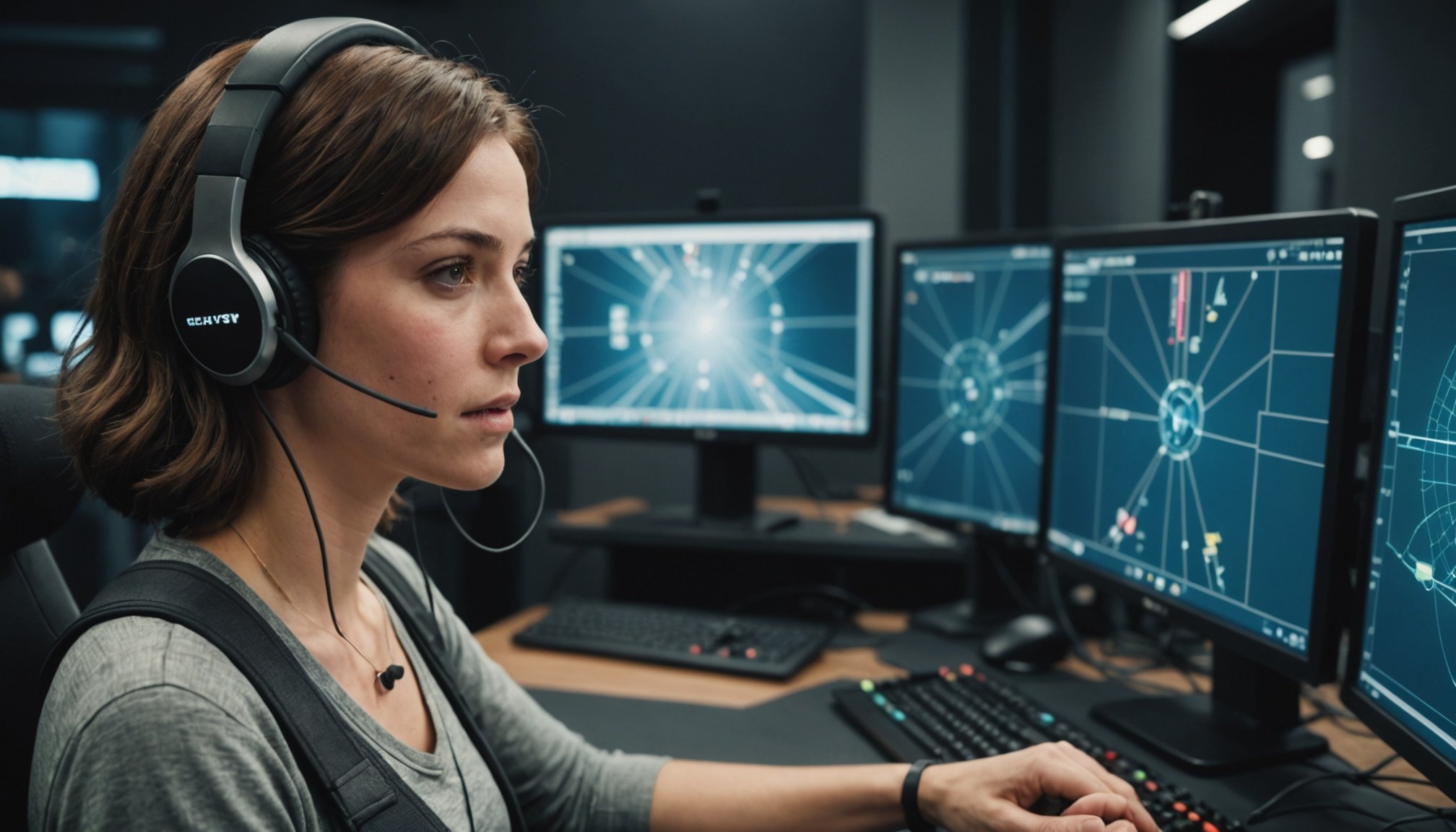Overview of Voice Recognition Technology in Gaming
In the realm of gaming, voice recognition technology has undergone significant transformation. Initially rudimentary, it now provides a seamless integration into gaming technology, enhancing player experiences significantly. This evolution stems from advancements in software algorithms and hardware components which allow systems to better understand and process natural language.
Today’s voice recognition technology in gaming is not only about issuing commands; it’s about transforming how players interact with narrative-driven games, offering a more immersive experience. Imagine engaging with game characters using your voice, impacting storylines and actions naturally. This brings about a level of interactivity that goes beyond traditional input methods.
Topic to read : Revolutionizing gaming experience: harnessing ai for dynamic real-time lighting adjustments in games
Market demand for such innovations is higher than ever, with players expecting games to be intuitive and responsive. Developers are meeting these expectations by integrating voice recognition with gaming technology, crafting experiences that are more personal and engaging.
Embracing this technology can lead to a richer, more dynamic gaming environment where players are no longer restricted by traditional controls. Instead, they dive into worlds where their voice carries weight, shaping adventures and story arcs. As this technology continues to advance, the possibilities for more enhanced gameplay experiences will expand further.
Also to read : Shattering the limits of visual fidelity: how real-time ray tracing elevates space exploration gaming
Impact on Narrative-Driven Video Games
In recent years, narrative-driven games have leaned heavily on technological advancements to enrich storytelling and player immersion. One such advancement is the integration of voice recognition technology, which significantly alters how stories unfold in these games.
Role of Voice Recognition in Storytelling
Voice recognition plays a crucial role by allowing players to interact with game characters and environments through natural speech. This technology facilitates dynamic narrative shifts, tailoring stories based on player input and decisions. As a result, players experience a more personalized and immersive journey, deeply enhancing the storytelling aspect of gaming.
Enhancing Player Engagement
By incorporating voice commands, players become active participants in the narrative rather than passive observers. This engagement transforms the gaming experience, as players influence plot development through their verbal choices. Such interactivity evokes emotional investment, making players feel their actions truly impact the game world.
Case Studies: Successful Implementation
- Mass Effect series: Utilizes voice commands for dialogue selection, advancing plot branches.
- Skyrim VR: Enables players to shout voice commands for spells, enhancing realism.
Feedback highlights players’ appreciation of increased immersion, as they find the technology blurs the line between the virtual and real world. Analysis of voice interaction mechanics reveals a more nuanced understanding of character motivations and narrative outcomes, contributing to an enriched player experience.
Technical Integration of Voice Recognition
In the realm of technical innovation, voice recognition systems have become a staple in modern applications. The integration processes involve seamless amalgamation of voice APIs, which are essential for interpreting and executing spoken commands. These systems are deeply embedded into existing system architecture, ensuring stability and performance.
However, integrating voice recognition into game environments presents unique challenges. Real-time processing demands high efficiency as input latency can affect user experience. Furthermore, adapting existing architecture to support voice features without compromising game performance is paramount. Hence, a thoughtful approach is required to maintain optimal functionality.
For successful integration, adopting best practices is crucial. System architecture should facilitate scalability and resilience. It’s essential to evaluate API compatibility with existing game engines to ensure technical innovation doesn’t translate into technical debt. Communication protocols must be optimized to handle variable data loads efficiently.
Moreover, comprehensive testing must be conducted throughout the integration processes. Simulated environments assist in identifying potential issues before full deployment. By rigorously evaluating voice features in varied scenarios, developers can enhance reliability and user satisfaction. This holistic focus ensures integration is both practical and user-centric, ushering in a new era of interactive gameplay.
Future Trends in Voice Recognition for Gaming
As voice recognition becomes more integrated into gaming, future technology promises to revolutionise how players engage with games. This gaming trend is poised to deliver immersive experiences unparalleled by traditional controls.
Predictions from Industry Experts
Experts predict that continued advancements in voice interaction will lead to more natural dialogues between players and game characters. Anticipated improvements in voice recognition accuracy are expected to match or surpass that of human understanding, making this technology indispensable in upcoming game releases.
Potential Innovations on the Horizon
One potential innovation is the seamless incorporation of AI-driven voice interaction. This offers a dynamic gaming environment where non-playable characters can adapt conversations based on a player’s vocal cues. Such systems will tailor experiences, making gaming more personal and engaging.
Implications for Game Design
With voice recognition primed to influence game design, expected shifts in player interactions are significant. Traditional storytelling could evolve, with pathways altering according to spoken choices, shaping unique narratives. Additionally, enhanced AI capabilities in voice recognition could see adaptive gameplay mechanics responding specifically to individual player behaviours. Long-term, these advancements promise to transform narrative depth, making them pivotal in future storytelling approaches within gaming.






